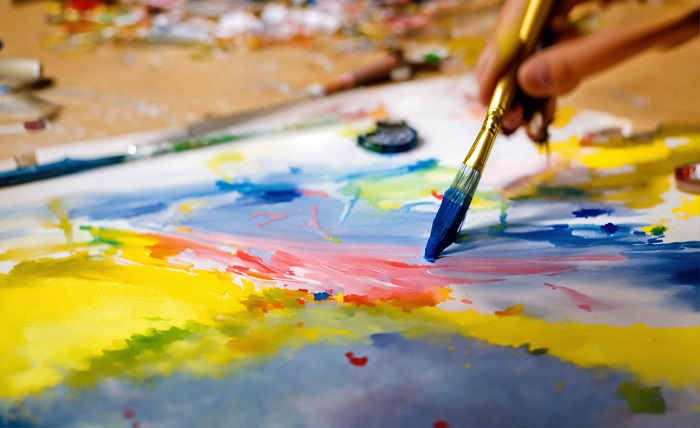Mastering the Art of Acrylic Colour Techniques Tips and Creative Applications

Introduction
Acrylic paints are a versatile medium known for their bright colours and quick drying times. Used by artists worldwide, acrylics can be applied to a wide range of surfaces, from canvas to wood. This post explores the rich potential of acrylic colour, offering insights and tips to help both beginners and seasoned artists.
History of Acrylic Paints
Acrylic paint was first developed in the 1940s, becoming commercially available in the 1950s. It revolutionized the art world due to its versatility and durability. This section delves into the history of acrylics and how they’ve become a favourite among artists of all genres.
Basic Materials Needed for Acrylic Painting
Before you start painting with acrylics, it’s essential to gather the right materials. This includes high-quality acrylic paints, brushes suitable for acrylics, a sturdy canvas, and other tools like palettes and water containers. Understanding what materials are best can make a big difference in your work.
Read more about aviatornation
Techniques for Beginners
Learning to paint with acrylics doesn’t have to be daunting. Here, we cover basic techniques such as blending, dry brushing, and stippling. These foundational skills will help you handle acrylic colour with confidence and ease.
Advanced Techniques with Acrylic Colours
For the more experienced artist, advanced techniques such as glazing, layering, and texturing with acrylics offer a way to add complexity and depth to your paintings. Explore how these techniques can enhance the dynamism and emotion in your artwork.
Colour Mixing and Theory
Colour theory is crucial in effectively using acrylics. This section explains how to create a broad spectrum of shades and tones by mixing primary colours. Understanding colour theory can greatly improve the impact of your acrylic paintings.
Tips for Maintaining Vibrant Colours
One of the charms of acrylic paint is its ability to maintain vibrant colours over time. Learn tips on preserving the brightness of your colours, such as choosing the right type of canvas and knowing how to seal your artwork properly.
Read more about instafinsta
Creative Projects with Acrylic Colours
Acrylics are not just for traditional canvas painting. They can be used for a variety of creative projects, including murals, fabric painting, and mixed media art. Get inspired with project ideas that showcase the flexibility of acrylic paints.
Troubleshooting Common Acrylic Painting Issues
Sometimes working with acrylic colour can present challenges, such as uneven texture or quick drying of the paint. This section addresses common issues and provides practical solutions to help you overcome these obstacles and continue creating stunning art.
The Future of Acrylic Paints in Art
As technology progresses, so do the formulations of acrylic paints. Discuss the future of acrylics in the art world, including innovations in sustainability and new applications that could further transform how artists use this medium.
Conclusion
Acrylic paints offer a world of artistic possibilities. Whether you are just starting out or looking to refine your techniques, the versatility and vibrant results of acrylic colours can truly unleash your creative potential. Continue experimenting with new techniques and colours, and watch your artistry flourish.
Frequently Asked Questions
1.Can acrylic paint be used on any surface?
- Yes, acrylic paint adheres well to many surfaces, including canvas, wood, fabric, and paper. Preparation of the surface, such as priming, might be necessary depending on the material.
2. How do you prevent acrylic paint from drying too quickly?
- To keep acrylic paint from drying too quickly, use a palette wetting spray or a stay-wet palette while painting. Additionally, working in a cooler, less airy environment can help slow the drying process.
3. What is the best way to blend acrylic colours?
- For smooth blending, work quickly while the paint is still wet, use a medium like glazing liquid, and employ a soft brush to mix the colours gently on the canvas.
4. Can I mix acrylic paint with other types of paint?
Acrylics can be mixed with other water-based paints, but mixing them with oil-based paints is not recommended without proper medium.
5. How do you seal an acrylic painting?
- To seal an acrylic painting and enhance its durability, apply a varnish or a protective acrylic sealer. Choose between gloss, satin, or matte finishes according to the desired look.





